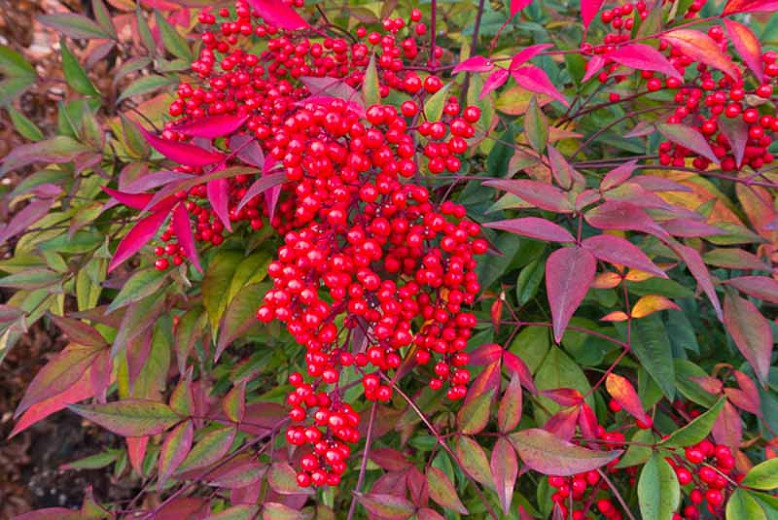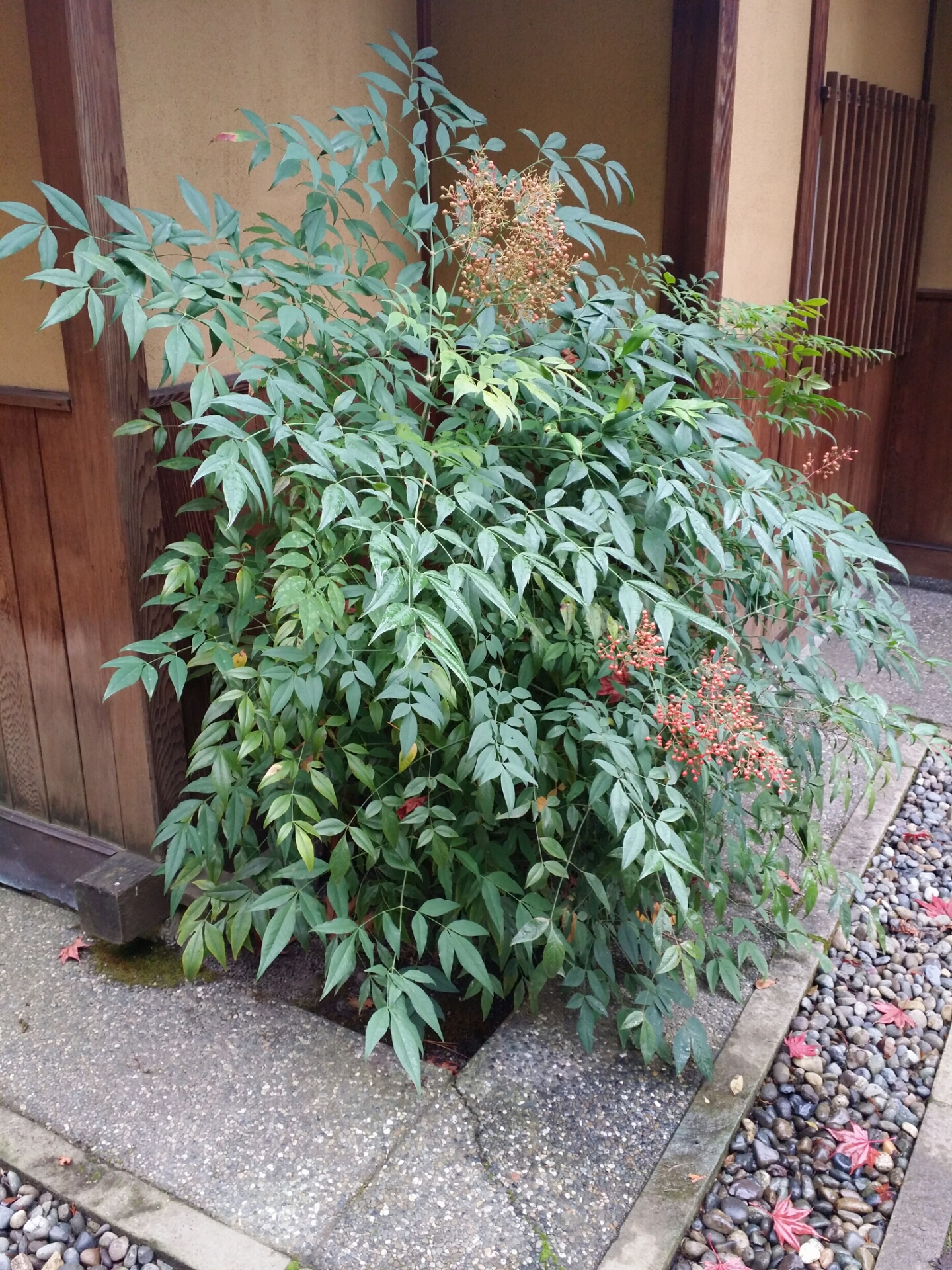How To Grow Nandina Domestica Heavenly Bamboo For Beautiful Foliage And Berries
Nandina Domestica, also known as Heavenly Bamboo, is a beautiful and versatile shrub that can be grown in a variety of settings. It is known for its colorful foliage, which can range from green to red to purple, and its attractive red berries. Nandina is also a relatively low-maintenance plant, making it a good choice for busy gardeners.
In this blog post, we will discuss how to grow Nandina Domestica for beautiful foliage and berries. We will cover topics such as choosing the right location, planting, watering, fertilizing, and pruning. We will also provide some tips on how to prevent pests and diseases.
Choosing the Right Location
Nandina Domestica prefers full sun, but it can also tolerate partial shade. It is important to choose a location that is sheltered from strong winds, as these can damage the plant. Nandina also prefers well-drained soil.
Planting
Nandina Domestica can be planted in the spring or fall. When planting, dig a hole that is twice as wide as the root ball of the plant. Backfill the hole with soil, and water the plant thoroughly.
Watering
Nandina Domestica needs regular watering, especially during the first year after planting. Once the plant is established, it is more drought tolerant. However, it is still important to water the plant during hot, dry periods.
Fertilizing
Nandina Domestica does not need to be fertilized often. A light application of fertilizer in the spring will help the plant to produce its best foliage and berries.
Pruning
Nandina Domestica can be pruned to maintain its shape or to remove dead or diseased branches. Pruning can be done in the spring or fall.
Preventing Pests and Diseases
Nandina Domestica is generally a pest- and disease-free plant. However, it can be susceptible to scale, mealybugs, and aphids. If you notice any pests on your Nandina plant, you can treat them with insecticidal soap or neem oil.
Conclusion
With proper care, Nandina Domestica can be a beautiful and long-lived addition to your garden. It is a relatively low-maintenance plant that is easy to grow, and it can provide you with years of enjoyment.
Here are some additional tips for growing Nandina Domestica:
- Mulch around the plant to help retain moisture and suppress weeds.
- Protect the plant from cold winter winds by wrapping it in burlap or other protective material.
- Harvest the berries when they are fully ripe and use them in salads, desserts, or as a garnish.
With these tips in mind, you can easily grow Nandina Domestica Heavenly Bamboo for beautiful foliage and berries.
Nandina domestica, also known as heavenly bamboo, is a beautiful and versatile shrub that can be used in a variety of landscape settings. It is hardy in USDA zones 7-9 and can tolerate a wide range of soil conditions. Nandina has attractive foliage that turns shades of red, purple, and bronze in the fall and winter. It also produces clusters of small white flowers in the spring.
If you are interested in learning more about nandina domestica, I recommend visiting Home Gardening. This website provides comprehensive information about the plant, including its care requirements, pest and disease resistance, and potential uses in the landscape.
FAQ of nandina domestica
What are some frequently asked questions about Nandina domestica?
- How long does Nandina live?
- Where does Nandina grow best?
- What are the different types of Nandina?
- How do I care for Nandina?
- How do I propagate Nandina?
- Is Nandina invasive?
- Is Nandina poisonous?
How long does Nandina live?
Nandina can live for over 100 years. It is a hardy plant that can withstand a wide range of conditions.
Where does Nandina grow best?
Nandina grows best in moist but well-drained soil that is slightly acidic. It can tolerate full sun or partial shade.
What are the different types of Nandina?
There are several different types of Nandina, including:
- Nandina domestica 'Firepower': This type of Nandina has bright red leaves in the fall.
- Nandina domestica 'Variegata': This type of Nandina has white and green leaves.
- Nandina domestica 'Sensation': This type of Nandina has deep purple leaves.
How do I care for Nandina?
Nandina is a relatively easy plant to care for. It needs to be watered regularly, especially during hot weather. It should also be fertilized once a year in the spring.
How do I propagate Nandina?
Nandina can be propagated by seed, but it is more easily propagated by division or cuttings. To propagate by division, simply dig up a mature plant and divide it into several smaller plants. To propagate by cuttings, take a 6-inch cutting from a healthy plant and plant it in a pot of well-draining soil.
Is Nandina invasive?
Nandina can be invasive in some areas. It is important to check with your local nursery or extension office to see if Nandina is a prohibited plant in your area.
Is Nandina poisonous?
Nandina is not poisonous to humans or animals. However, the berries can be a choking hazard for small children.
Image of nandina domestica
- Nandina domestica in full bloom. This image shows a nandina domestica shrub in full bloom, with its clusters of white flowers.

- Nandina domestica with red berries. This image shows a nandina domestica shrub with its red berries, which are a popular winter decoration.

- Nandina domestica in a garden. This image shows a nandina domestica shrub in a garden, with its green leaves and white flowers.

- Close-up of nandina domestica leaves. This image shows a close-up of the leaves of a nandina domestica shrub, which are a deep green color.

- Nandina domestica in autumn. This image shows a nandina domestica shrub in autumn, with its leaves turning a beautiful red color.

- Nandina domestica in winter. This image shows a nandina domestica shrub in winter, with its leaves turning a deep red color and its berries still hanging on.

- Nandina domestica in a pot. This image shows a nandina domestica shrub in a pot, which can be a great way to bring some greenery indoors.

- Nandina domestica as a hedge. This image shows a nandina domestica shrub that has been trimmed into a hedge, which is a popular way to use this plant.

- Nandina domestica as a ground cover. This image shows a nandina domestica shrub that has been planted as a ground cover, which is a great way to add some color and interest to your garden.
- Nandina domestica as a focal point. This image shows a nandina domestica shrub that has been planted as a focal point in a garden, with its bright red berries providing a contrast to the surrounding plants.

Post a Comment for "How To Grow Nandina Domestica Heavenly Bamboo For Beautiful Foliage And Berries"